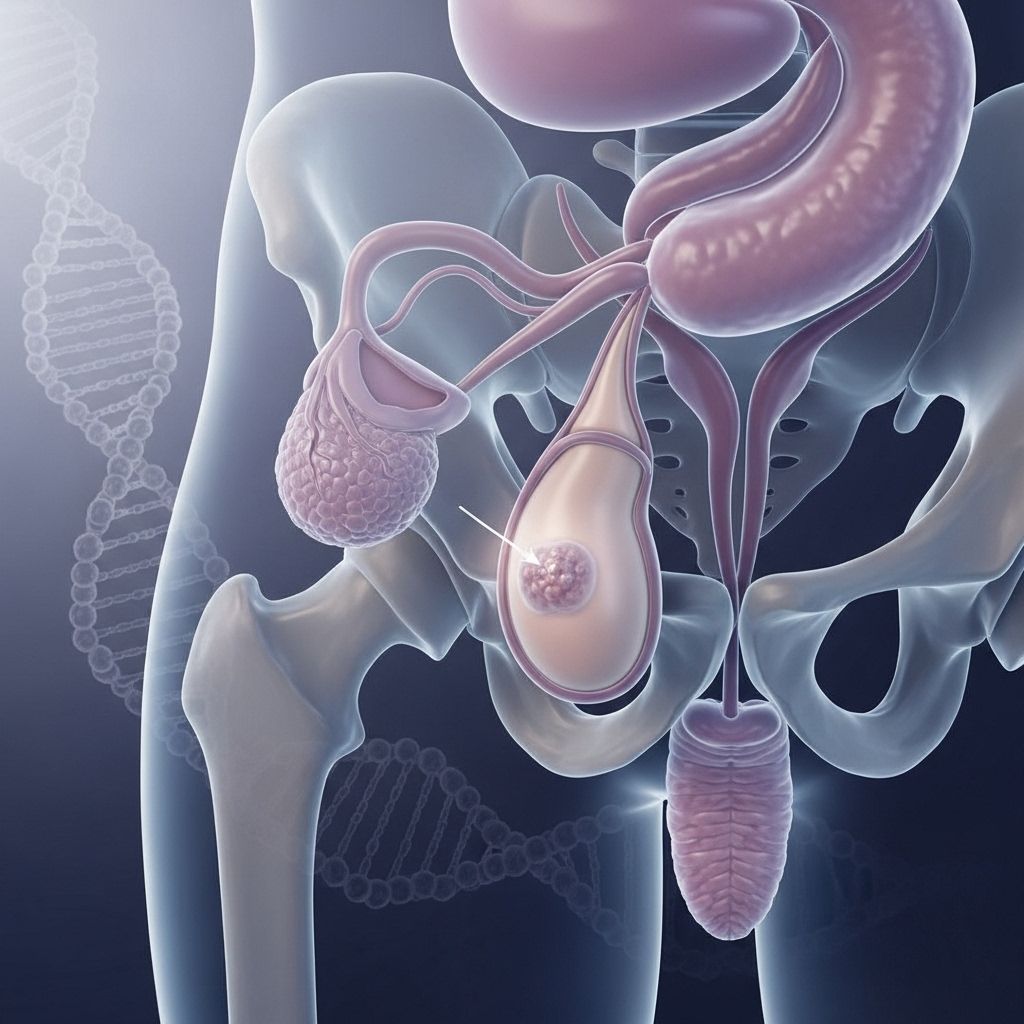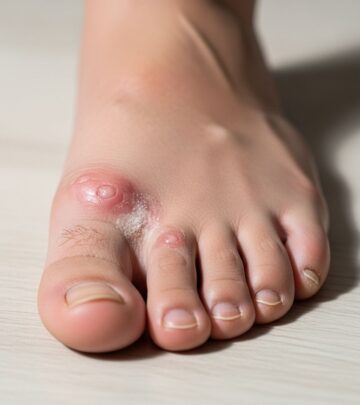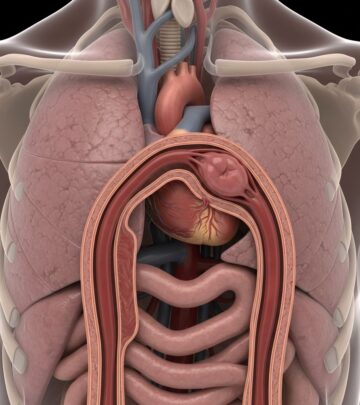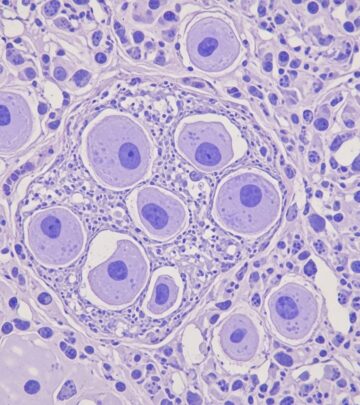Overactive Bladder: Symptoms, Causes, and Risk Factors
Understand the symptoms, underlying causes, and risk factors of overactive bladder to manage this common and disruptive condition with confidence.

Overactive bladder (OAB) is a condition marked by sudden, involuntary muscle contractions in the bladder, resulting in a frequent and urgent need to urinate. Affecting millions of people across all ages, OAB can significantly disrupt quality of life. This article delves into the key symptoms, underlying causes, risk factors, and guidance on when medical attention should be sought.
Overview
An overactive bladder manifests as a collection of urinary symptoms that typically lead to social discomfort, anxiety, or even lifestyle changes. While it can affect anyone, it is more common with increasing age and in women due to menopause, pregnancy, and childbirth. However, many individuals may feel hesitant or embarrassed to discuss these symptoms, delaying diagnosis and treatment.
Symptoms
The symptoms of overactive bladder can range in severity and frequency. Individuals may experience some or all of the following signs:
- Urinary urgency: A sudden, compelling urge to urinate that is difficult to postpone.
- Urge incontinence: Involuntary loss of urine immediately following an urgent need to urinate.
- Frequent urination: Needing to urinate more often than what is typical for age and activity (often defined as more than eight times in a 24-hour period).
- Nocturia: Waking two or more times during the night to urinate.
These symptoms can:
- Appear suddenly, even when the bladder is not full.
- Lead to unintentional urine leakage.
- Result in disrupted sleep and decreased daytime functioning.
- Cause embarrassment, social withdrawal, and potential depression if left untreated.
When to See a Doctor
Overactive bladder, while bothersome, is not a normal part of aging and should not be ignored. You should seek medical advice if:
- You experience sudden, frequent, or urgent urination that is new or worsening.
- You have incontinence that affects daily activities or quality of life.
- You notice blood in your urine, pain while urinating, or experience unexplained symptoms such as fever or back pain.
- You begin to restrict activities or social outings due to bladder concerns.
Timely evaluation can identify potential underlying causes or complications and facilitate appropriate treatment.
Causes
Overactive bladder is primarily caused by inappropriate bladder muscle (detrusor) contractions, even when urine volume is low. The underlying reasons for these involuntary contractions and heightened sensitivity vary:
Common Causes
- Neurological disorders: Conditions affecting the brain or spinal cord, such as stroke, multiple sclerosis, or Parkinson’s disease, can disrupt nerve signals to the bladder.
- Urinary tract conditions: Bladder stones, tumors, or urinary tract infections (UTIs) can irritate the bladder wall, mimicking OAB symptoms.
- Diabetes: Poor glycemic control can damage nerves responsible for bladder function, leading to urgency and frequency.
- Obstruction: Factors that impede urine flow—such as an enlarged prostate (benign prostatic hyperplasia), constipation, or post-surgical changes—can increase bladder pressure and sensitivity.
- Hormonal changes: Menopause-induced estrogen deficiency may thin the bladder lining, contributing to symptoms.
Additional Contributing Factors
- Mental or cognitive decline: Aging-related cognitive changes can make it harder for individuals to interpret or act on bladder signals appropriately.
- Dietary factors: Excessive intake of caffeine or alcohol can stimulate bladder muscle contractions.
- Medications: Certain diuretic medications or drugs requiring high fluid intake may provoke overactive symptoms.
- Physical limitations: Trouble getting to the bathroom quickly, as seen in arthritis or mobility disorders, may worsen the problem.
- Incomplete bladder emptying: Inadequate voiding leaves residual urine, reducing capacity and increasing frequency.
Often, the precise cause of OAB is unknown, especially when no clear medical, neurologic, or anatomical explanation can be established.
How the Bladder Normally Works vs Overactive Bladder
| Normal Bladder Function | Overactive Bladder |
|---|---|
| Bladder relaxes to fill with urine; brain signals appropriate time to urinate; muscles contract only when urination is intended. | Bladder muscles (detrusor) contract involuntarily, regardless of urine volume; results in frequent urges and leakage. |
| Allows for waiting or delaying urination until convenient. | Urgency is difficult to control, leaving little time to reach a restroom. |
| Minimal nocturia (nighttime urination). | Multiple awakenings at night to urinate (nocturia). |
Risk Factors
Several risk factors may predispose individuals to develop overactive bladder:
- Advanced age: Bladder capacity and compliance can decrease with age, and neurological control may weaken.
- Gender: Women are at higher risk, especially after pregnancy, childbirth, and menopause; men with prostate enlargement are also vulnerable.
- Neurological disease: Conditions such as stroke, Parkinson’s disease, or multiple sclerosis increase susceptibility.
- Diabetes: Both type 1 and type 2 diabetes are associated with bladder dysfunction.
- Obesity: Extra weight places additional pressure on the bladder and pelvic floor.
- Constipation: Full bowels can compress the bladder, contributing to urgency and frequency.
- Prior pelvic or bladder surgery: Surgical interventions may alter nerve or anatomical structures, affecting bladder control.
- Inactivity or mobility limitations: Physical inability to reach the restroom may worsen effects of OAB.
Complications
Untreated overactive bladder can adversely affect physical and emotional well-being:
- Emotional distress: Anxiety, depression, and social withdrawal can develop due to fear of accidents or embarrassment.
- Skin problems: Repeated urine leakage may cause skin irritation, rashes, and infections.
- Sleep disturbances: Nocturia disrupts quality sleep, leading to fatigue and impaired daytime function.
- Increased risk of falls: Elderly individuals hurrying to the bathroom at night have heightened fall risk, potentially leading to fractures.
Prevention
While not all cases of overactive bladder are preventable, certain measures can help lower risk or alleviate symptoms:
- Stay at a healthy weight: Reduces pressure on the bladder and pelvic floor.
- Manage chronic conditions (e.g., diabetes): Optimizing blood sugar and addressing underlying illnesses.
- Avoid bladder irritants: Limit caffeine, carbonated drinks, alcohol, citrus, spicy or acidic foods.
- Stay hydrated appropriately: Do not restrict to the point of dehydration, but avoid excess intake.
- Regular bladder training: Scheduled toileting and pelvic floor exercises can strengthen bladder control.
- Prevent constipation: High-fiber diet and exercise can help bladder function indirectly.
Frequently Asked Questions (FAQs)
Q: Can overactive bladder go away on its own?
A: No, overactive bladder rarely resolves without intervention. Symptoms may persist or worsen with time if not addressed through lifestyle changes or medical treatment.
Q: Is overactive bladder only a problem for older adults?
A: While age increases risk, OAB can occur at any age and in both genders, although it is more frequent in older adults and postmenopausal women.
Q: Are there lifestyle changes that can help reduce symptoms?
A: Yes, managing fluid intake, limiting bladder irritants (like caffeine or alcohol), weight loss, and pelvic floor muscle exercises can be effective initial strategies.
Q: Is overactive bladder a sign of something more serious?
A: Sometimes OAB can signal underlying medical issues such as urinary tract infections, stones, tumors, neurologic diseases, or diabetes. Diagnostic assessment helps rule out such conditions.
Q: When should I seek medical care for OAB symptoms?
A: Seek prompt medical evaluation if symptoms affect daily life, are severe or sudden, or are accompanied by blood in urine, pain, fever, or other concerning signs.
Key Takeaways
- Overactive bladder is a prevalent yet manageable condition characterized by urgency, frequency, nocturia, and possible incontinence.
- Causes range from neurological and anatomical problems to lifestyle and dietary factors; risk increases with age and in women.
- Left untreated, OAB can impact mental, physical, and social well-being, but timely intervention can restore quality of life.
References
- https://www.mayoclinic.org/diseases-conditions/overactive-bladder/symptoms-causes/syc-20355715
- https://www.mayoclinic.org/symptoms/frequent-urination/basics/causes/sym-20050712
- https://www.mayoclinichealthsystem.org/hometown-health/speaking-of-health/what-can-you-do-for-an-overactive-bladder
- https://my.clevelandclinic.org/health/diseases/14248-overactive-bladder
- https://www.mayoclinic.org/diseases-conditions/overactive-bladder/diagnosis-treatment/drc-20355721
- https://www.mayoclinic.org/diseases-conditions/urinary-incontinence/symptoms-causes/syc-20352808
- https://www.mayoclinic.org/diseases-conditions/interstitial-cystitis/symptoms-causes/syc-20354357
- https://www.mayoclinic.org/diseases-conditions/urinary-incontinence/in-depth/bladder-control-problem/art-20046597
- https://www.mayoclinichealthsystem.org/hometown-health/speaking-of-health/food-and-bladder-symptom-links
Read full bio of Sneha Tete












